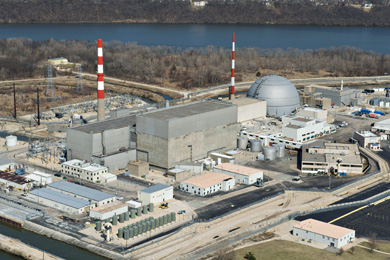If the United States faced a nuclear disaster, local governments would automatically take charge, followed by federal authorities if the crisis grew too big for local responders to handle. But this system has a flaw: The nation’s emergency plans don’t spell out when or how the transfer of authority would be handled, even though small delays could put thousands of lives at risk.
The timing of federal involvement is deliberately kept ambiguous in order to “forestall a conflict about who’s in charge,” said William Banks, director of the Institute for National Security and Counterterrorism and a Syracuse University law professor.
“We don’t practice scenarios where state and local officials are overwhelmed from the get-go and the feds have to step in and take charge,” Banks said. “The exercising and planning that’s going on never forces a clarification of the answers to those questions.”
The bottom-up system sometimes gives local authorities a staggering amount of responsibility. For example, officials in Grundy County, Ill., which has a population of just 48,000, are solely responsible for activating the first steps in the government’s response to a crisis at the Dresden nuclear power station, even though almost 7 million Chicago-area citizens live within 50 miles of the plant.
The response plan for an emergency at Dresden illustrates how authorities might respond to a nuclear crisis.
According to state and local officials in Illinois, the first signs of a problem would likely be detected by Dresden’s owner, Exelon, or by a monitoring system for nuclear plants run by Illinois’ Emergency Management Agency. Exelon is required by law to report any incident of note to local and state officials within 15 minutes of when it occurs.
Unless Illinois’ governor declares martial law, it would be up to the county sheriff, the chairman of the Grundy County Board or the director of the county Emergency Management Agency — or their designated backups — to activate the response plans, said James Lutz, the emergency management agency’s current director. If they decide they need help, they can request support from the state or/and the federal government. But emergency plans don’t specify under what conditions that should happen.
Like every county in Illinois, Grundy County writes its own emergency plans. Lutz said that these plans must meet federal standards, but the requirements give counties broad discretion to develop plans that take into consideration their varying resources. “There are rules, but the way you get to them is up to us,” Lutz said. “It’s somewhat open to interpretation, because the rules use words like ‘in a timely manner’ or ‘without undue delay.'”
Sheryl Klein, coordinator of the Illinois Management Agency’s Radiological Emergency Response Team, said the state requires only that counties meet the federal standards. The state’s responsibilities, she said, include sending teams of scientists to affected areas to assess conditions and helping with radiation detection and decontamination at emergency shelters.
If state and federal help is called in, Klein said a unified emergency command system would be set up to coordinate decision-making. The roles the various agencies and governments would play are laid out in federal emergency plans, specifically the National Response Framework.
But those plans don’t specify what conditions would trigger federal involvement, beyond broad terms such as states being “overwhelmed” and requesting federal assistance, or a declaration by the U.S. president. Banks, the Institute for National Security director, said in a recent paper that this ambiguity about when federal officials should wait for requests from the states — or when they should take action on their own — could create delays and confusion.
“Even minutes can make a tremendous difference in saving lives,” he told ProPublica.
Even after the federal government becomes involved, the chain of command can be uncertain.
On March 13, Rep. Edward Markey, D-Mass., wrote a letter to President Obama raising concerns that “no agency sees itself as clearly in command of emergency response in a nuclear disaster. … One Agency official essentially told my staff that if a nuclear incident occurred, they would all get on the phone really quickly and figure it out.”
A White House spokesman told ProPublica that government plans clearly establish who takes charge in different scenarios. Federal emergency plans include six different agencies that could potentially coordinate the response, depending upon which of 15 scenarios is triggered by the source and nature of the nuclear release.
Many observers, including Michael McDonald, the president of Global Health Initiatives, have warned that the emergency command system itself, adopted in recent years across all levels of government, would likely break down in a serious nuclear or radiological emergency, and that more flexible, adaptive systems are needed.
“It’s so complex,” McDonald said, “that these hierarchical, controlled systems can’t handle it.”












